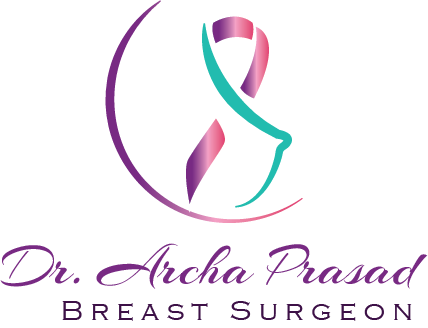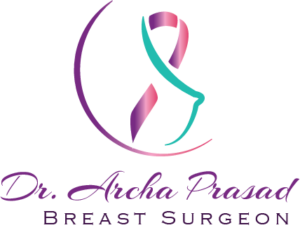Watch the above Video and Comfortably Practice at your Home👆🏻
Why Do I Need to do Exercises after my Surgery?
These exercises can help you regain arm & shoulder movement after surgery for breast cancer
Muscle seize up very quickly if they’re not used, so it’s important to do these exercises as part of your daily routine.
These exercises can also help:
- Improve symptoms that may be caused by tight scars & cording, when you feel as if you have a tight cord running down your affected arm
- prevent long-term problems with arm & shoulder movement, posture & stiffness
- reduce the risk of lymphoedema – swelling of the arm, hand, breast, or chest area caused by a build-up of lymph fluid
If you are worried about any of these. or have symptoms of cording, speak to your breast care nurse or physiotherapist as soon as possible.
The exercises have been developed with the help of breast surgeons, breast care nurses and physiotherapists
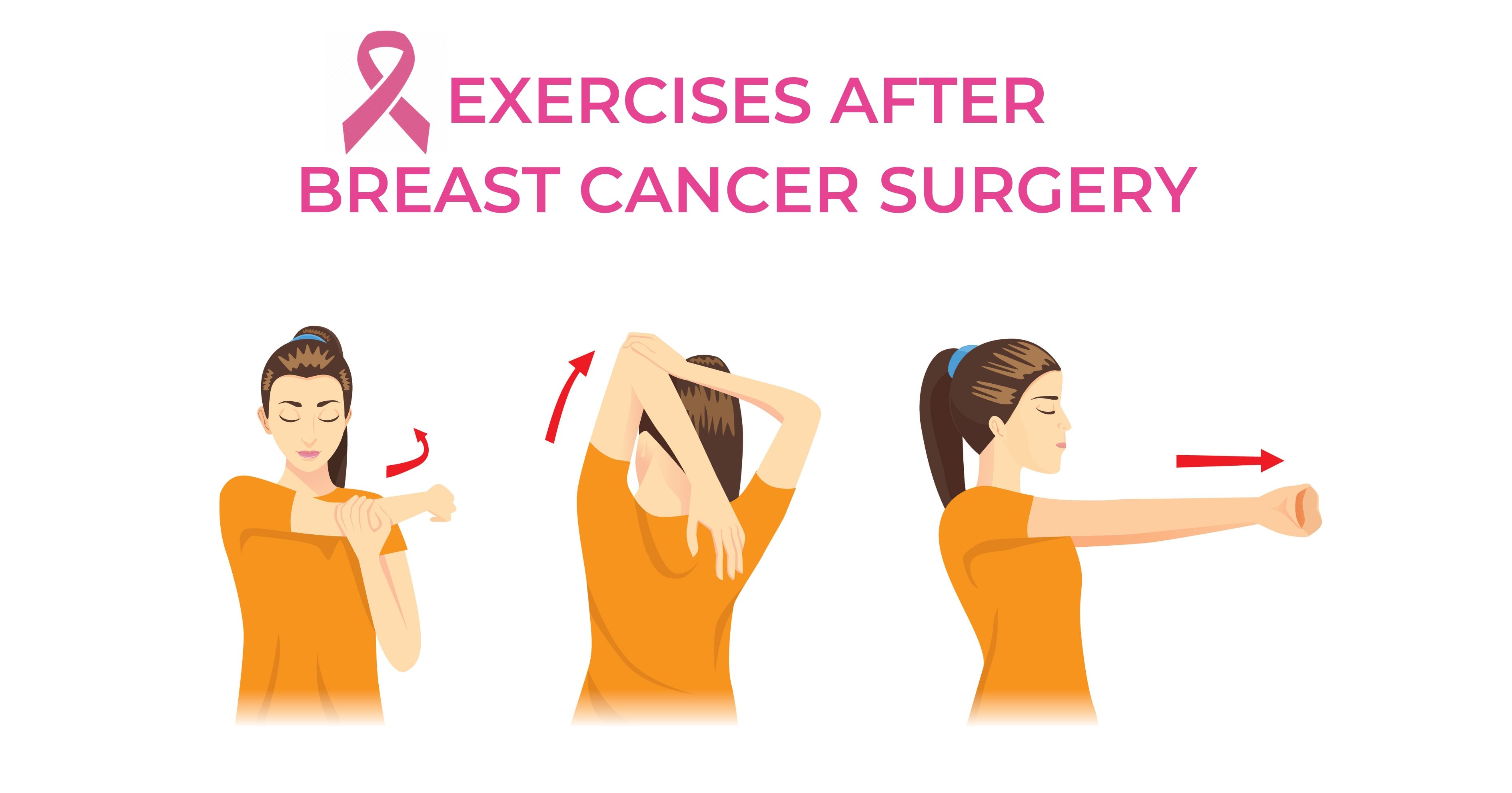
Who are the exercises suitable for?
The exercises are suitable for people who have had:
- Breast surgery
- lymph node removal
- radiotherapy
“If you recently had a breast reconstruction or any other type of surgery, talk to the surgeon who did the operation, your breast care nurse or your physiotherapist before you start any exercises, and follow their advice.”
When to Start the Exercises?
Ideally start the exercises the day after your surgery
If your feel you’re unable to start the exercise within a couple of days of your surgery. speak to your breast care nurse or physiotherapist.
Don’t worry if you can’t manage to do all the exercises every time. For example, during radiotherapy you may find the exercises more difficult. Do as much as you feel you can.

How should the exercises feel?
You shouldn’t feel pain when doing the exercises. However, a stretching or pulling sensation is normal.
You maybe advised to take some pain relief before doing the exercises.
The more you do the exercises, the easier they should become.
Always do the warmup at the start-up and the cool-down at the end of each session to help avoid injury and stiffness.
If at any time you become concerned about your range of movement or level of discomfort, speak to your breast care nurse or physiotherapist
When to Stop
Stop doing the exercises and speak to your surgeon, physiotherapist or breast care nurse as soon as possible if you have:
- a seroma (a collection of fluid under the arm or in the breast or chest wall)
- wound infection or healing problems
- pain that gets worse during these exercises or continues once you’ve finished them
Start the exercises again when your surgeon, physiotherapist or breast care nurse says it’s safe to do so.

How long should i continue doing the exercises?
If you’ve just had surgery, keep doing the exercises until you’ve got back the range of movement you had before your operation. Continue doing the exercises if you’re going to have radiotherapy as they’ll help your shoulder flexibility.
If you’ve had radiotherapy, it’s a good idea to do the exercises as long as you’re still feeling tightness and stiffness. Arm stiffness and weakness can occur long after surgery and radiotherapy so you may want to continue dong the exercises after this.
Talk to your breast care nurse or physiotherapist if you’re not sure how long to keep up with the exercise programme or if you’ve have any concerns about your recovery after surgery
Warm Up Exercises
Exercise 1: Shoulder Shrugs
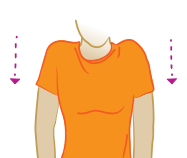
- Keep your arms loose and relaxed by your sides.
- Shrug your shoulders up towards your ears and lower gently back down
Exercise 2: Shoulder Circling
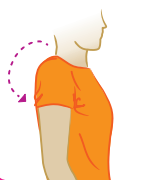
- Keep your arms loose and relaxed by your sides.
- Shrug your shoulders up towards your ears and then circle them back and down.
Simple Exercises
Exercise 3: Bent Arm Forwards
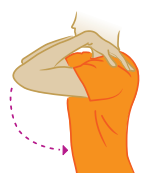
- Bend your elbows and rest your hands lightly on your shoulders.
- Raise both your arms forward so they are at right angles to your body.
- Lower your elbows slowly.
Exercise 4: Bent Arm Sideways
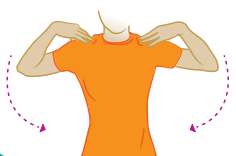
- Rest your hands on your shoulders. but this time raise your elbows out to the sides.
- Lower your elbows slowly.
Exercise 5: Back Scratching
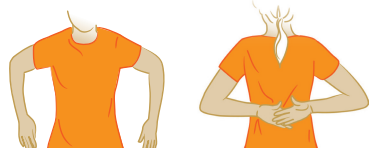
- Hold your arms out to the sides and bend your arms from the elbow.
- Slowly reach up behind your back to just under your shoulder blades.
- Slowly lower your arms back down to your sides.
Exercise 6: Winging It
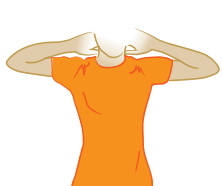
- Place your hands behind your head with your elbows pointing forwards.
- Bring your elbows back so they’re pointing out to the sides, then return to the starting position.
Advanced Exercises
Exercise 7 (Step 1): Wall Climbing
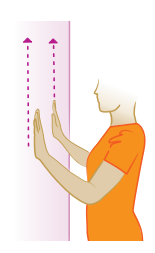
- With your feet apart, stand close to and facing a wall. Put both hands on the wall at shoulder level.
- Looking straight ahead, gradually work your hands up the wall — sliding them or using your fingers to climb. Get as far as you can, to feel a stretch but not pain.
- Hold here and count to 10.
- Slide your hands back to shoulder level before repeating the exercise.
- Try to get higher each time.
Exercise 7 (Step 2): Wall Climbing
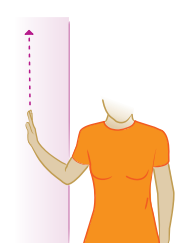
- Stand sideways with your affected side nearest the wall.
- Put your hand on the wall, keeping your elbow bent and your shoulder relaxed.
- Look straight ahead and gradually creep your hand up the wall as far as you can, allowing your elbow to straighten.
- Hold here and count to 10, then lower your hand back down.
Exercise 8: Arm Lifts
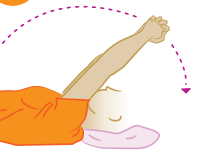
“Alternative If you have difficulty lying down – for example because of breathlessness – you can do this exercise in a sitting position, leaning back in your chair.”
- Lie on the bed or floor with a cushion or pillow to support your head.
- Take three or four really deep breaths and concentrate on relaxing your shoulders so they are not hunched up towards your ears.
- Clasp your hands together or hold onto a stick or broom handle. Keep your elbows straight and lift your arms up and over your head as far as you feel comfortable.
- Hold them here and count to 10. then lower your arms slowly. You may find it useful to put a pillow behind you to support your arms until you’re able to get them further back.
Exercise 9: Elbow Push
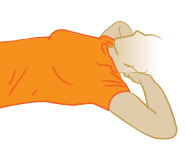
- Lie on your back with your hands behind your head and your elbows out to the sides.
- Gently push your elbows downwards into the bed or floor as far as is comfortable.
- Hold and count to 10, then relax.
When to do Exercises?
First Week After Surgery
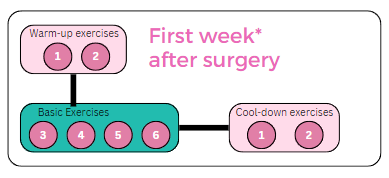
Second Week After Surgery
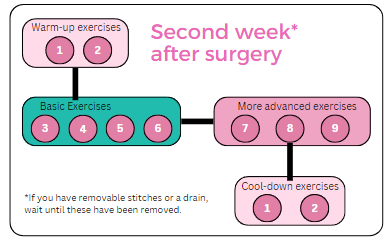
- Repeat each exercise 5 times before moving on to the next one
- Try to do the exercises 3 times a day – morning, around midday and evening
